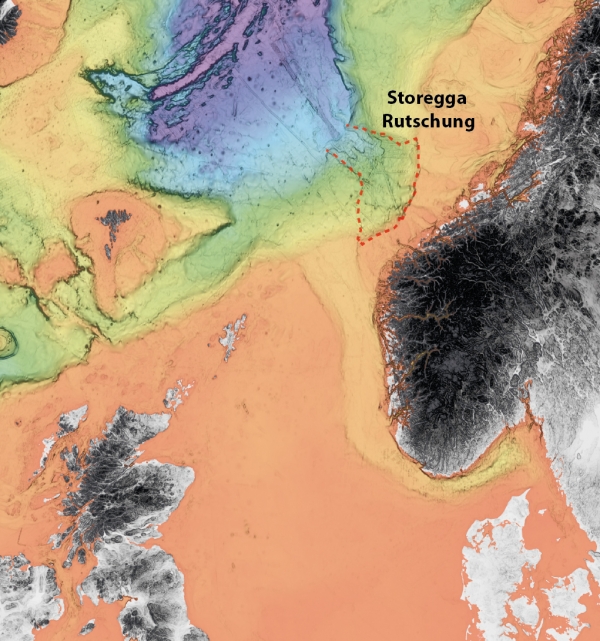Submarine landslides have a large tsunami potential and occurred on the central Norwegian shelf more frequently in the past than previously thought. This is shown by a study led by GEOMAR Helmholtz Centre for Ocean Research Kiel, published in the journal Nature Communications Earth & Environment. The scientists investigate the Nyegga landslide off the coast of Norway, an event that is first described in this publication. The submarine landslide occurred in the same area as the well-known Storegga event 8,150 years ago. The new findings suggest that approximately one-third of the seafloor material missing – previously attributed to the Storegga event – was removed by the Nyegga event 20,000 years ago. This raises questions about the frequency of large submarine landslides and their associated tsunami hazard.
The Storegga event is one of the largest submarine landslides known in the world and is located off the coast of Norway. It occurred about 8,150 years ago, after the end of the last ice age, and triggered a massive tsunami that devastated the coasts of the North Atlantic and what was then the North Sea. Previously, it was assumed that the slide displaced all of the sediments deposited during the last ice age, along a distance of about 300 kilometers. The volume of sediments moved during the slide has been estimated at around 2,400 to 3,200 cubic kilometers – a mass that would be enough to cover all of Germany with seven to nine meters of sediment.
Now, scientists from GEOMAR Helmholtz Centre for Ocean Research Kiel and the University of Bergen, Norway have discovered that much of the seafloor sediment moved 12,000 years earlier, after the peak of the last Ice Age. Thus, the Nyegga landslide, named by the researchers after the Nyegga area where they discovered the first evidence of the event, had already occurred about 20,000 years ago. The geophysicists and geologists are able to demonstrate that about one-third of the material that slid, about 1,000 cubic kilometers, can be attributed to the Nyegga landslide. They published this surprising finding in the journal Nature Communications Earth & Environment.
Read more at Helmholtz Centre for Ocean Research Kiel (GEOMAR)
Image: The already known Storegga event, a submarine landslide. Graphic: Jens Karstens via GEOMAR)


